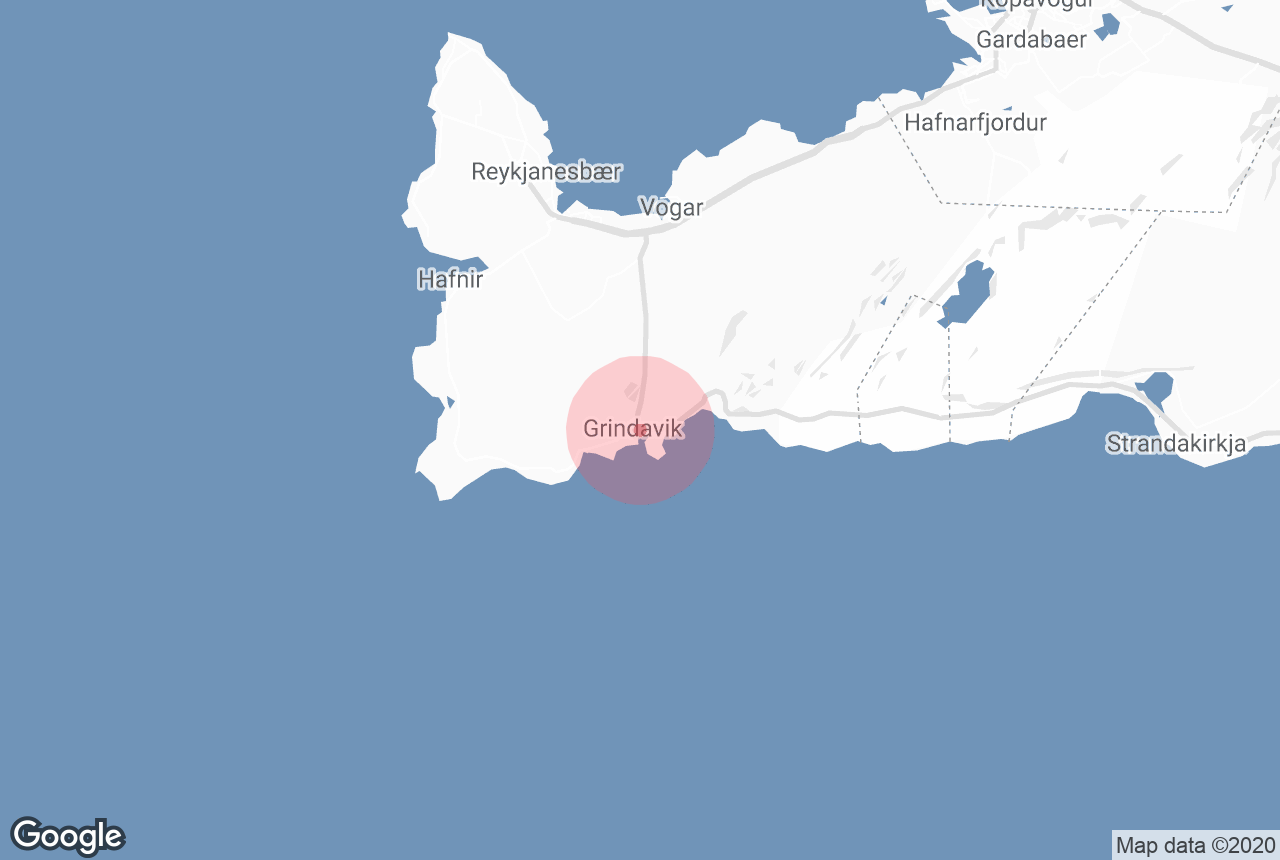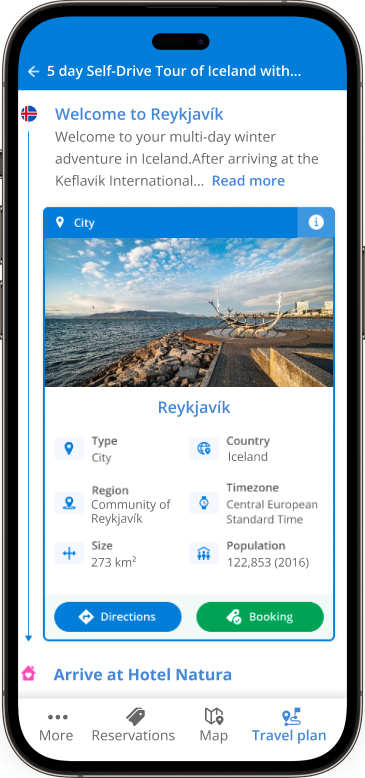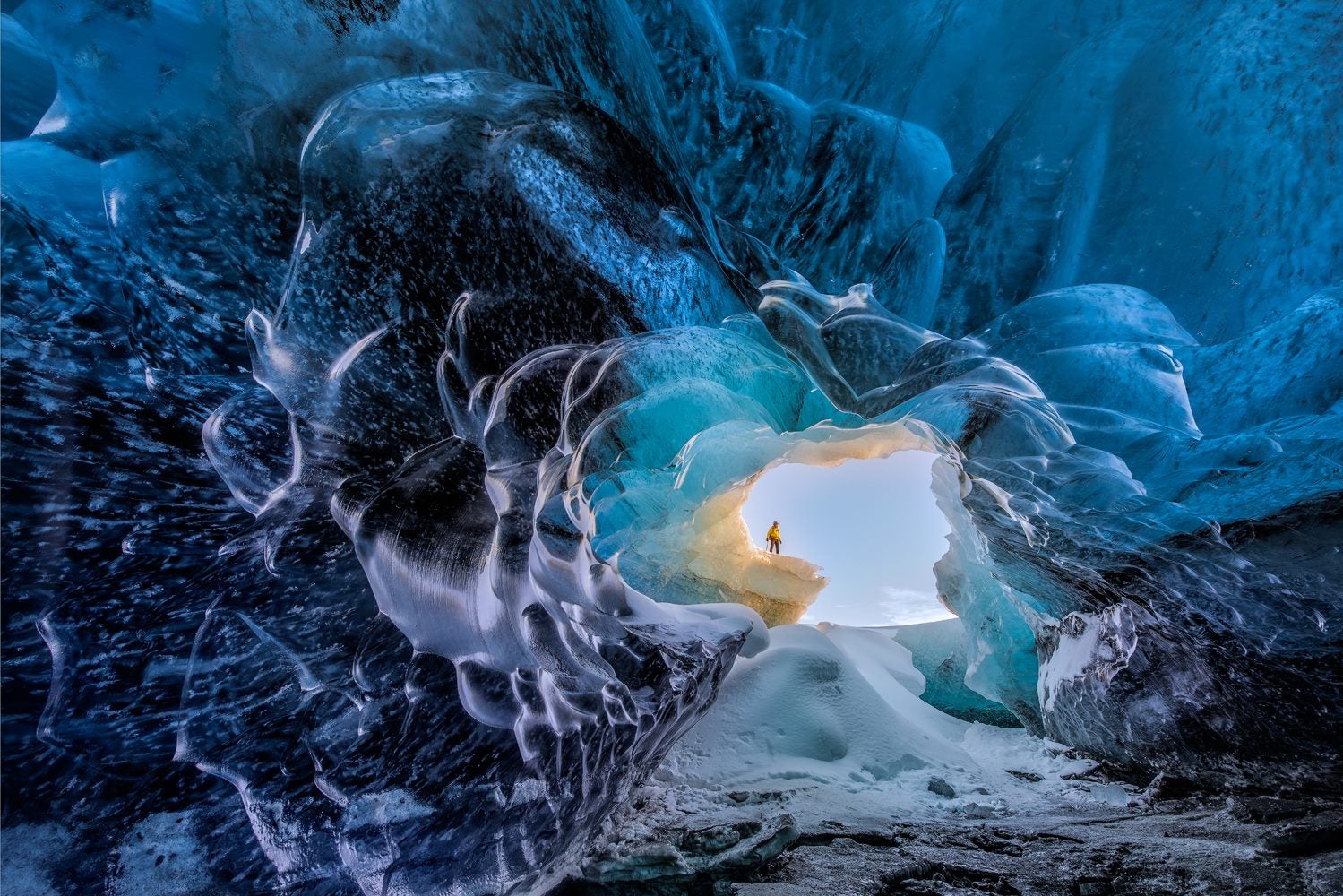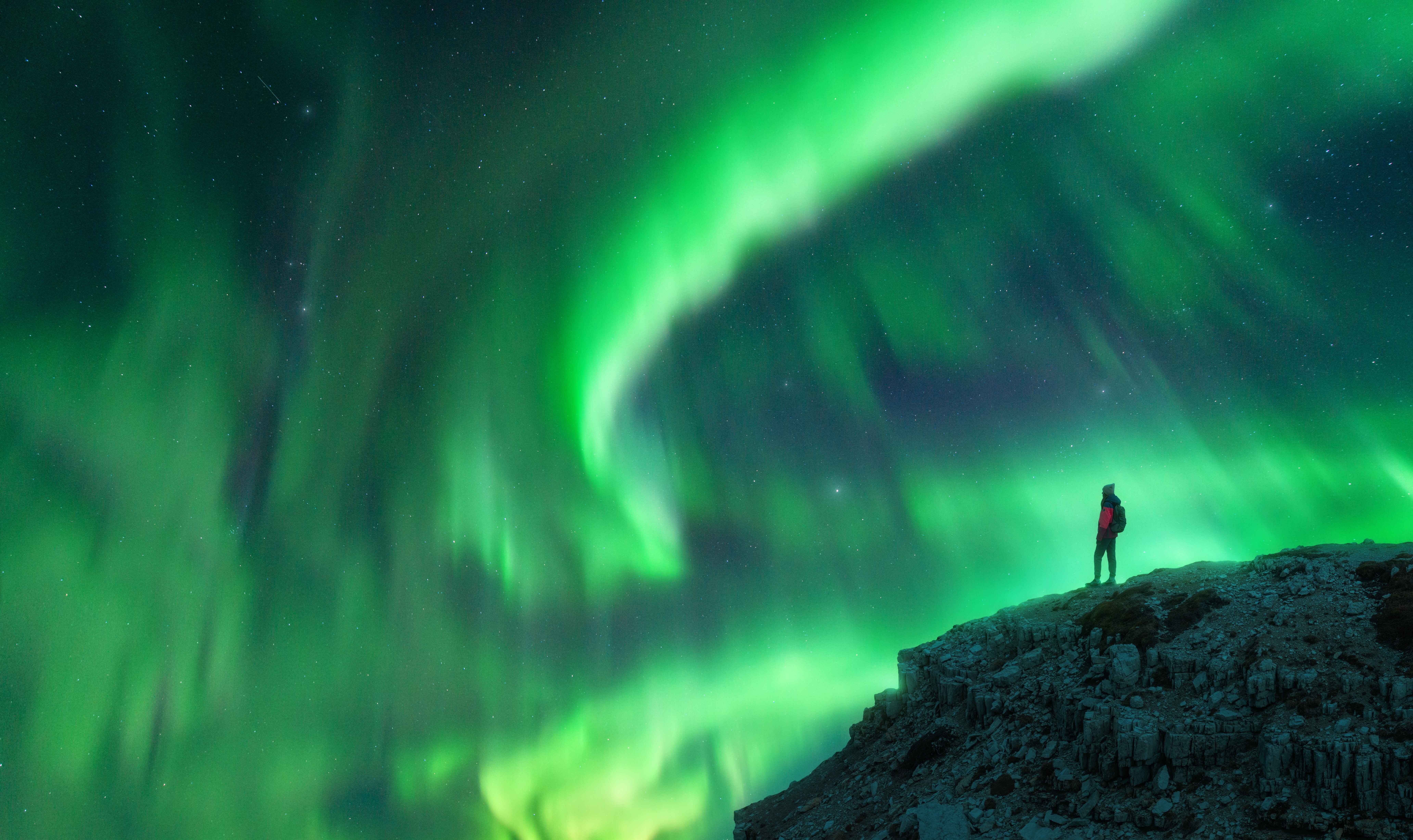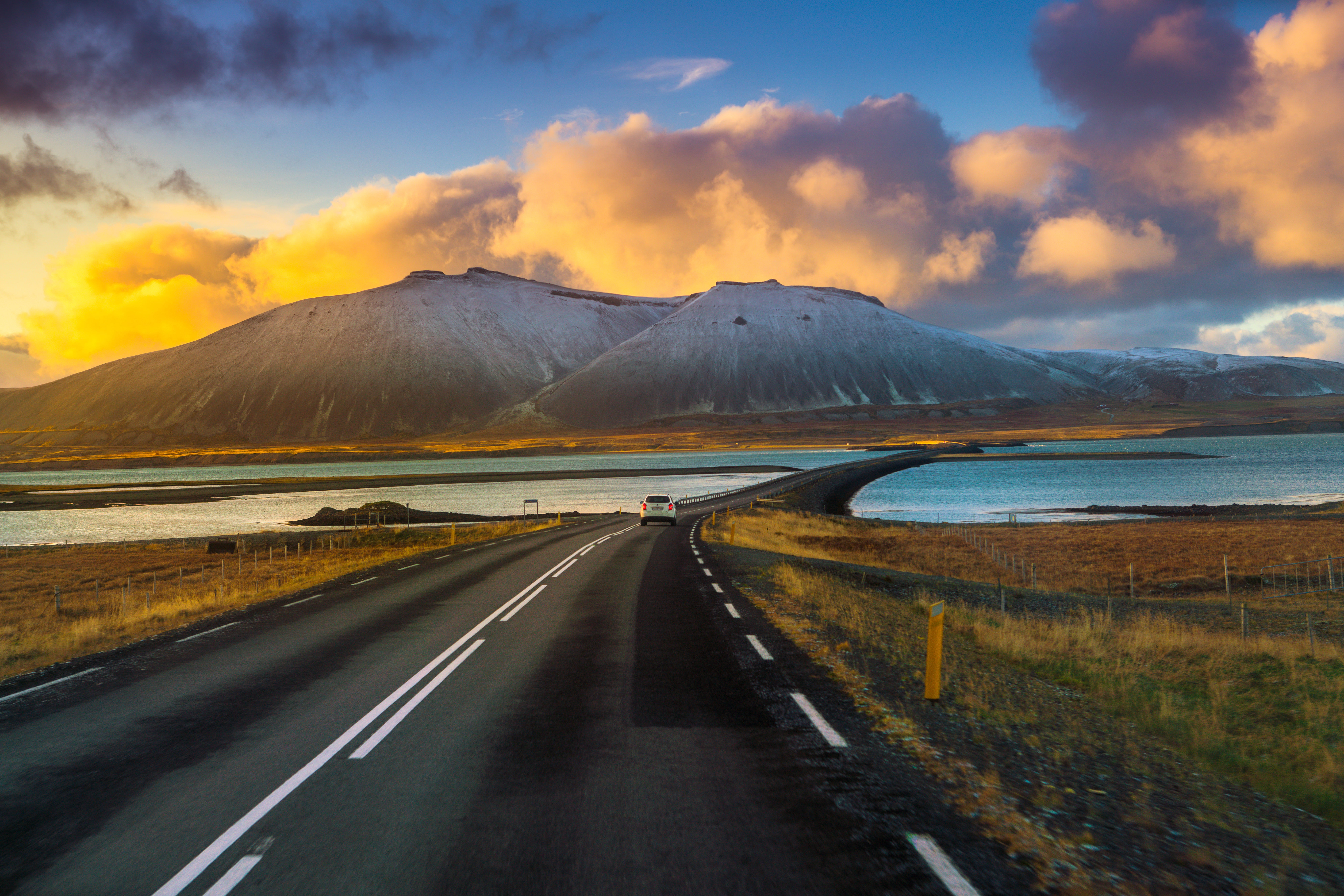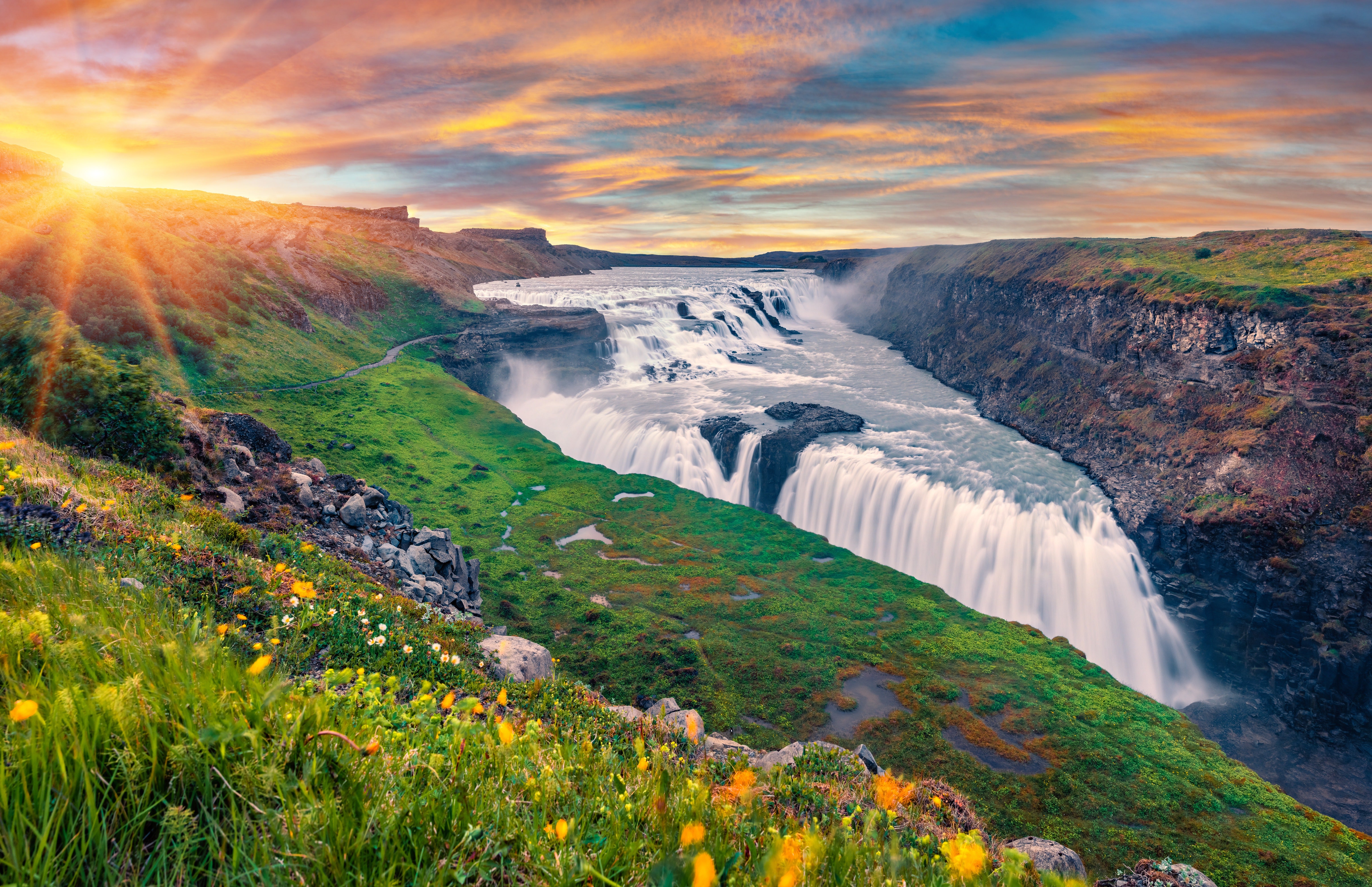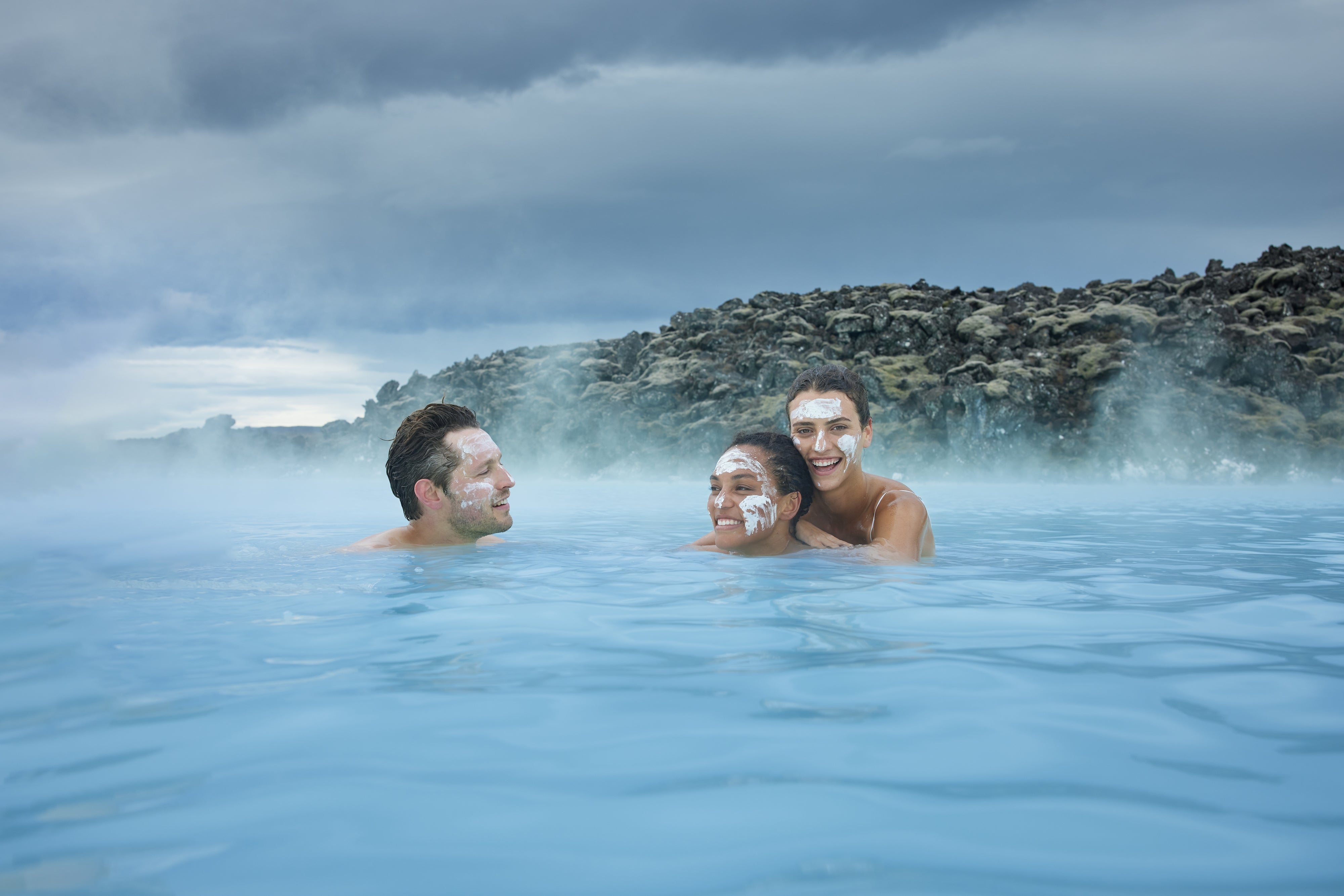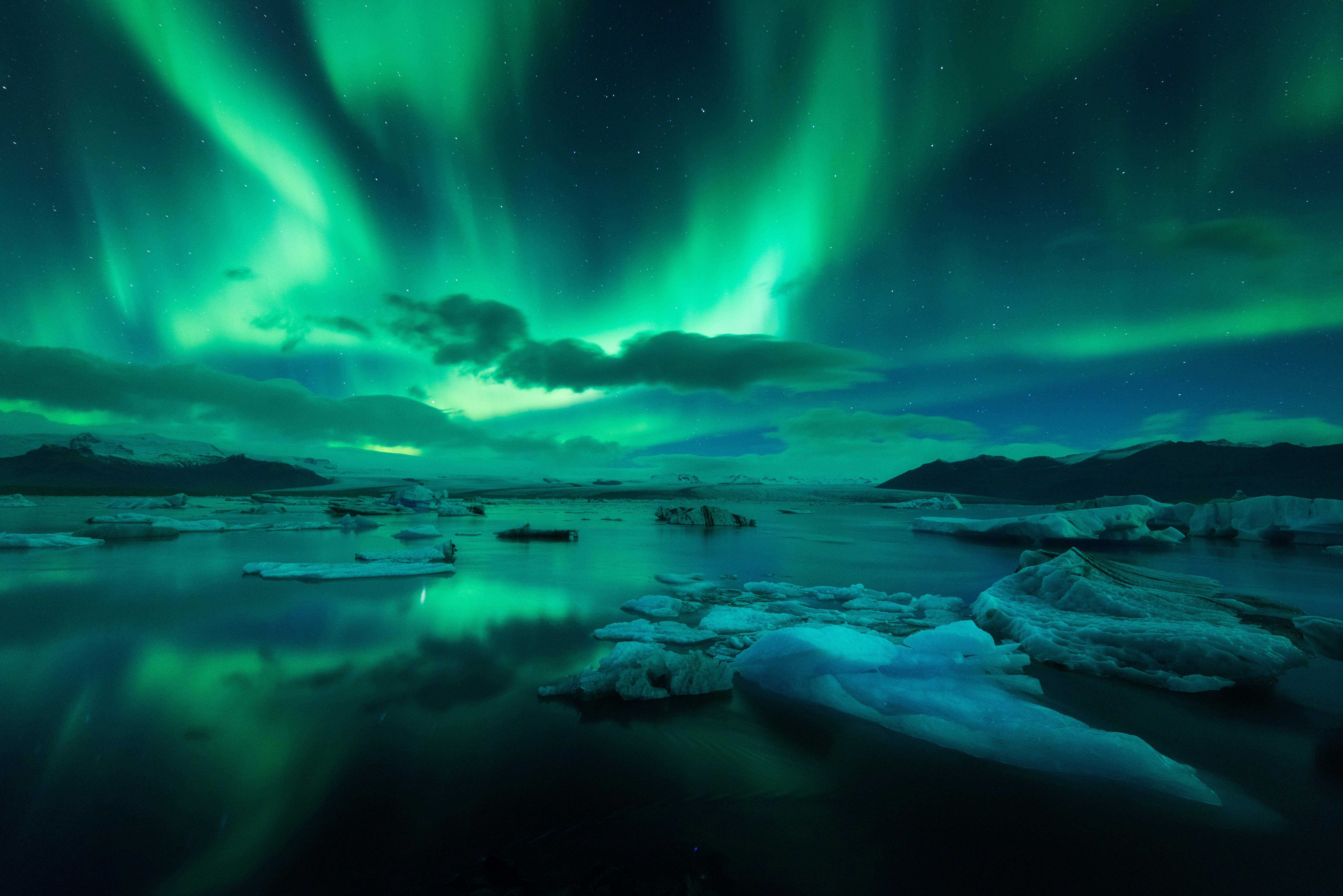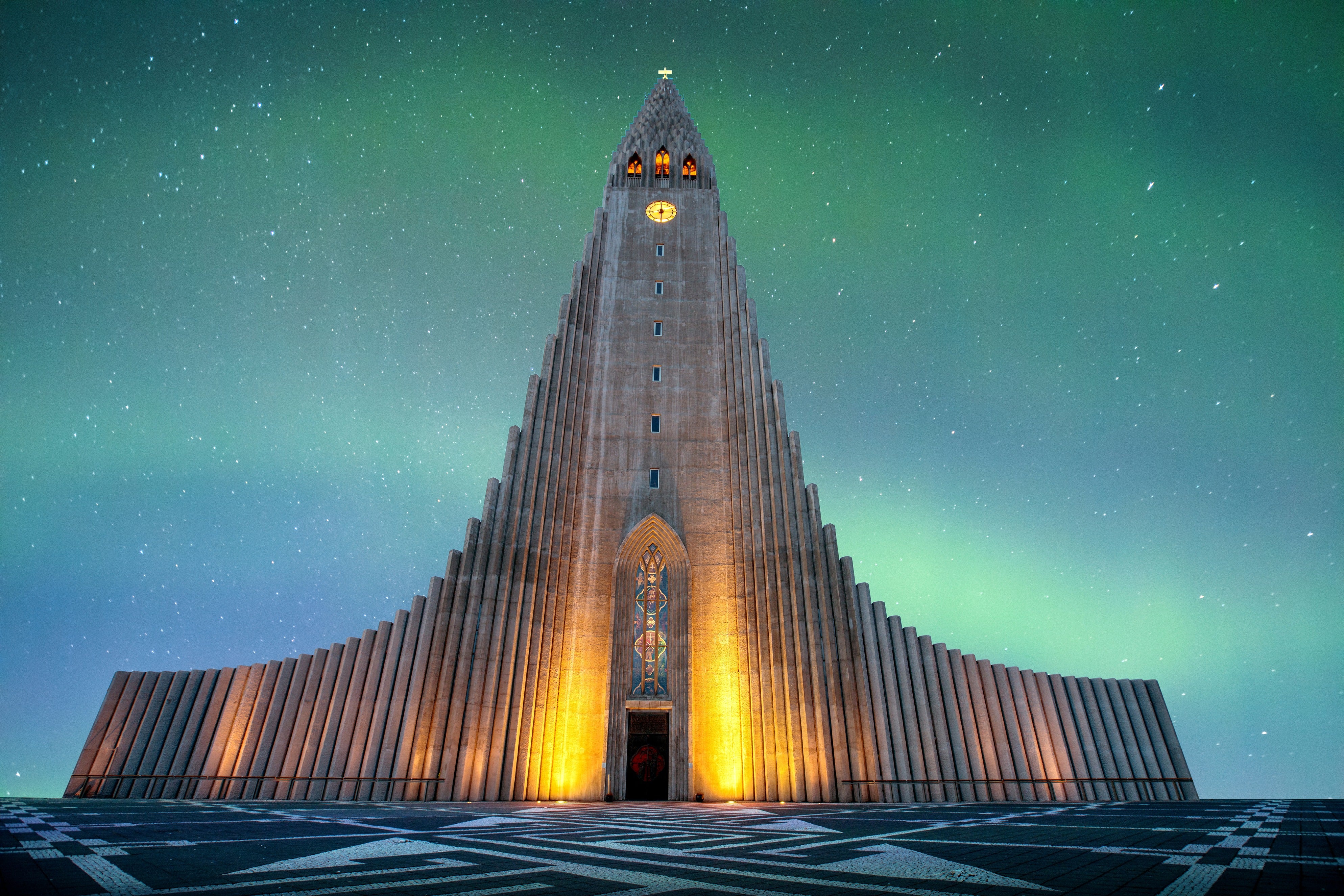
Grindavik est une petite ville de pêcheurs sur la côte sud de la péninsule de Reykjanes, en Islande. Étroitement liée à la mer, la ville vit de la pêche depuis toujours. Elle est entourée de champs de lave et se trouve près de la dorsale médio-atlantique, là où deux plaques tectoniques se rencontrent.
Cette situation unique place Grindavik au cœur d'une région géologiquement très active, souvent mise en avant lors des excursions sur la péninsule de Reykjanes qui dévoilent ses paysages géothermiques. Ces dernières années, la ville a connu une reprise de l'activité volcanique, notamment des éruptions près de la série de cratères Sundhnukagigar qui ont temporairement perturbé la vie locale.
Pourquoi faire confiance à notre contenu
Guide to Iceland est la plateforme de voyage la plus fiable d’Islande, aidant chaque année des millions de visiteurs. Tous nos contenus sont rédigés et vérifiés par des experts locaux qui connaissent parfaitement l’Islande. Vous pouvez compter sur nous pour des conseils de voyage précis, à jour et fiables.
Ces événements ont fait de Grindavik une porte d’entrée pour les excursions vers les volcans, offrant aux visiteurs la possibilité d’observer de près des paysages spectaculaires. L’une des options populaires est l'excursion volcanique de Grindavik et Krysuvik, qui inclut des arrêts sur des fissures actives et des sites géothermiques.
En plus de ses particularités volcaniques, Grindavik se trouve à quelques minutes en voiture de l’aéroport de Keflavik et du célèbre Blue Lagoon. La ville peut être incluse dans des forfaits vacances en Islande axés sur les paysages géothermiques et volcaniques de la péninsule de Reykjanes.
À retenir
-
Région volcanique active : Grindavik se situe dans l’une des zones les plus actives d’Islande, avec des éruptions récentes près de la série de cratères Sundhnukagigar offrant une occasion unique d’observer des paysages en pleine transformation.
-
Proximité des principales attractions : La ville est à quelques minutes en voiture du Blue Lagoon et de l’aéroport international de Keflavik.
-
Géoparc mondial UNESCO : Les Nations Unies ont classé la péninsule de Reykjanes comme Géoparc mondial UNESCO en 2015, reconnaissant son importance géologique exceptionnelle.
-
Meilleure période pour la visiter : L’été est idéal, avec une météo douce, de longues journées et la possibilité de se détendre dans le célèbre spa géothermique de la ville.
Activité volcanique et évacuations à Grindavik
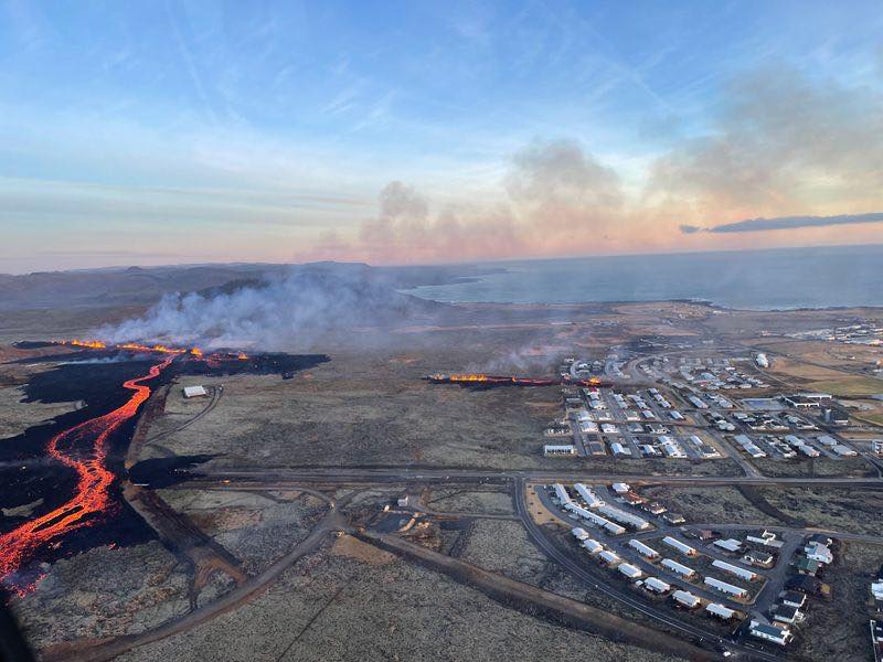
L’éruption volcanique près de Grindavik le 14 janvier 2024.
Grindavik a attiré l’attention internationale fin 2023 lorsque les habitants ont dû évacuer après la détection de magma à quelques centaines de mètres sous la surface.
Le 18 décembre 2023, une éruption volcanique le long de la rangée de cratères Sundhnukagigar a épargné la ville, mais les scientifiques ont averti qu’une accumulation de magma souterrain pouvait provoquer une nouvelle éruption.
En janvier 2024, une fissure près du mont Hagafell a déversé de la lave dans le nord de Grindavik, endommageant plusieurs maisons. D’autres éruptions ont suivi dans la rangée de cratères Sundhnukagigar, avec peu d’impact sur la ville.
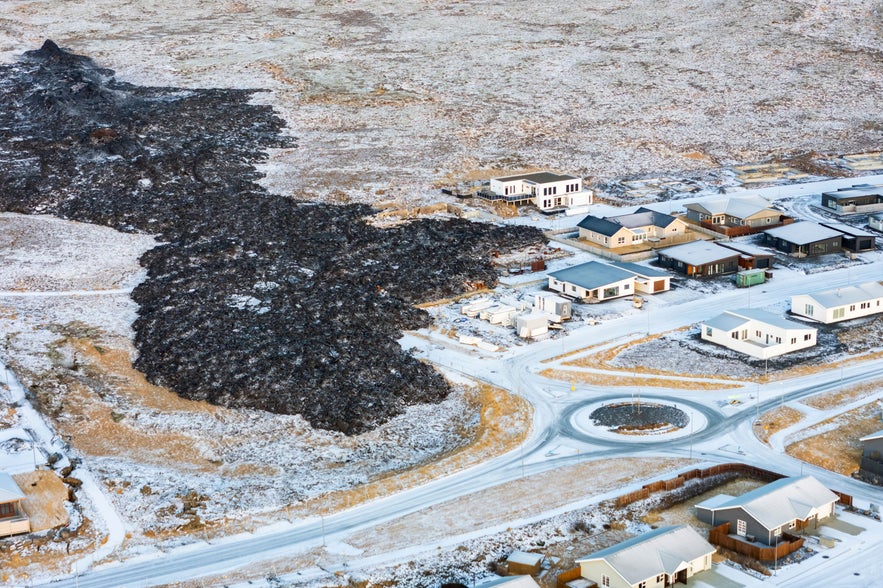 Malgré les éruptions récentes sur la péninsule de Reykjanes, Grindavik a été largement protégée des coulées de lave. La ville est entourée de barrières de protection, essentielles pour sa sécurité. Les autorités surveillent de près l’activité sismique et restreignent l’accès si besoin.
Malgré les éruptions récentes sur la péninsule de Reykjanes, Grindavik a été largement protégée des coulées de lave. La ville est entourée de barrières de protection, essentielles pour sa sécurité. Les autorités surveillent de près l’activité sismique et restreignent l’accès si besoin.
Grindavik reste ouverte aux visiteurs, mais il est important de rester prudent. Même si la lave n’a pas causé de dégâts majeurs, des fissures et une activité sismique persistante présentent des risques. Le sol peut bouger soudainement et des fissures peuvent se trouver juste sous la surface : suivez toujours les recommandations de sécurité et les panneaux d’avertissement.
Soyez rassurés, l’Islande reste une destination sûre. Le pays dispose de systèmes de surveillance performants pour garantir la sécurité des habitants et des voyageurs. Vous pouvez continuer à profiter des paysages, des attractions et des expériences uniques de l’Islande en toute sérénité.
Que faire près de Grindavik

Avec ses paysages impressionnants et sa riche histoire, la région de Grindavik offre des activités pour tous, des amoureux de la nature aux passionnés d’histoire. Il y a de quoi satisfaire les voyageurs de tous âges et de tous niveaux.
-
Expérience au Blue Lagoon : Attraction la plus célèbre d’Islande, le Blue Lagoon est un spa géothermique aux eaux riches en minéraux, réputées pour la détente et le soin de la peau. Réservez votre entrée au Blue Lagoon à l’avance et découvrez les soins signature du spa.
-
Krysuvik et Gunnuhver : Bien qu’il ne soit pas possible de s’y baigner, ces champs géothermiques valent le détour pour leurs sources chaudes bouillonnantes, fumerolles et mares de boue.
-
Le Pont entre les Continents : Cette passerelle suspendue symbolise la dorsale médio-atlantique, permettant aux visiteurs de marcher entre les plaques tectoniques nord-américaine et eurasienne.
-
Piscine de Grindavik : En été, les touristes peuvent profiter du complexe de piscines publiques de la ville, avec bains chauds, bassin pour enfants, toboggan et autres équipements ludiques.
-
Station de pêche de Selatangar : À seulement 14 km de Grindavik, découvrez les ruines d’une station de pêche active du 14e au 19e siècle.
-
Bassin de lave de Brimketill : Selon la légende, la troll Oddny se baignait et lavait ses vêtements dans ce bassin naturel spectaculaire sur la côte.
-
Phare de Hopsnes : Ce phare orange et rouge vif vaut à lui seul le détour sur la péninsule de Hopsnes, à seulement 4 km de Grindavik.
Comment se rendre à Grindavik
 Située à 42 km de l’aéroport international de Keflavik, Grindavik est une première étape idéale avant de rejoindre Reykjavik ou d’autres destinations. La ville est facilement accessible en voiture de location et fait partie de certains circuits guidés à la journée.
Située à 42 km de l’aéroport international de Keflavik, Grindavik est une première étape idéale avant de rejoindre Reykjavik ou d’autres destinations. La ville est facilement accessible en voiture de location et fait partie de certains circuits guidés à la journée.
Circuits en autotour
 Ces circuits en autotour permettent d’explorer la péninsule de Reykjanes et d’ajouter facilement un arrêt à Grindavik.
Ces circuits en autotour permettent d’explorer la péninsule de Reykjanes et d’ajouter facilement un arrêt à Grindavik.
-
Autotour d’été de 4 jours : Profitez des longues journées estivales avec ce circuit dynamique à la découverte du Cercle d’Or et de la côte sud.
-
Autotour d’hiver de 6 jours - Aurores boréales : Découvrez les paysages sous le ciel hivernal et partez à la chasse aux aurores boréales.
-
Autotour d’été de 8 jours : Commencez votre circuit par une visite de Grindavik et quelques heures de détente au Blue Lagoon avant de faire le tour de la Route 1.
-
Autotour d’hiver de 10 jours - Aurores boréales : Ce circuit hivernal inclut encore plus d’attractions et de temps pour observer les aurores boréales.
-
Autotour d’hiver de 12 jours : Les conducteurs expérimentés peuvent se lancer dans ce voyage de près de deux semaines, combinant sites incontournables et trésors cachés.
Excursions guidées à la journée
 Les excursions guidées à la journée sont idéales pour découvrir tous les sites incontournables si vous disposez de peu de temps.
Les excursions guidées à la journée sont idéales pour découvrir tous les sites incontournables si vous disposez de peu de temps.
-
Visite privée de 6 heures : Votre guide adaptera ce circuit sur la péninsule de Reykjanes selon vos envies. Les arrêts peuvent inclure les sources chaudes de Gunnuhver, les lacs Kleifarvatn et Graenavatn, ainsi que des sites à Grindavik.
-
Randonnée guidée dans la zone volcanique de Reykjanes : Après une randonnée passionnante près du volcan Sundhnukagigar, détendez-vous dans les eaux du Blue Lagoon.
Où manger à Grindavik
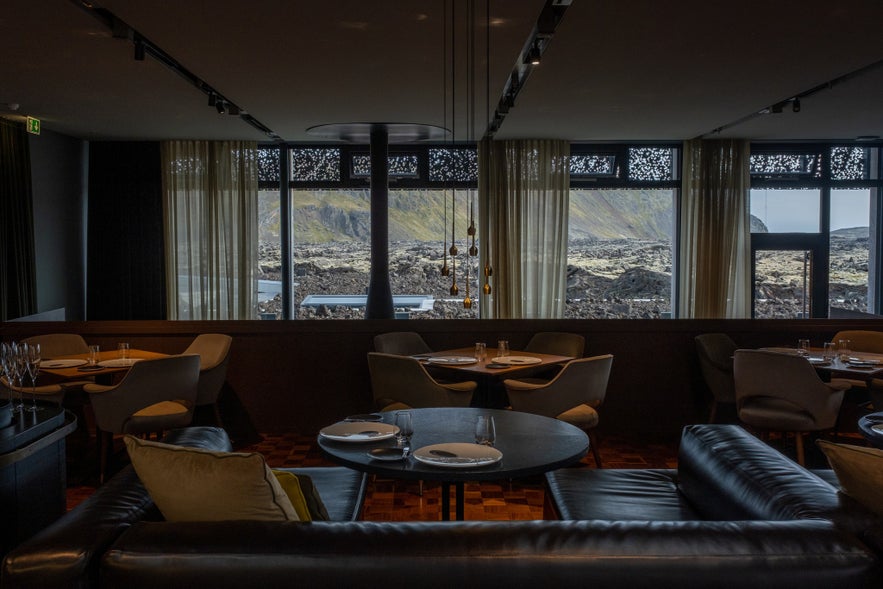 Impossible de visiter Grindavik sans goûter à la cuisine locale. Voici quelques adresses à ne pas manquer dans la région :
Impossible de visiter Grindavik sans goûter à la cuisine locale. Voici quelques adresses à ne pas manquer dans la région :
-
Papas Pizza : Cette pizzeria classique au cœur de Grindavik est restée ouverte malgré les effets volcaniques sur la ville. C’est l’adresse incontournable pour manger à Grindavik.
-
Lava Restaurant : Savourez un repas gastronomique dans une véritable falaise de lave, au restaurant du Blue Lagoon.
-
Moss Restaurant : Autre adresse du Blue Lagoon, Moss est étoilé Michelin et propose une expérience inoubliable avec son menu Chef’s Table en quatre services.
Brève histoire de Grindavik
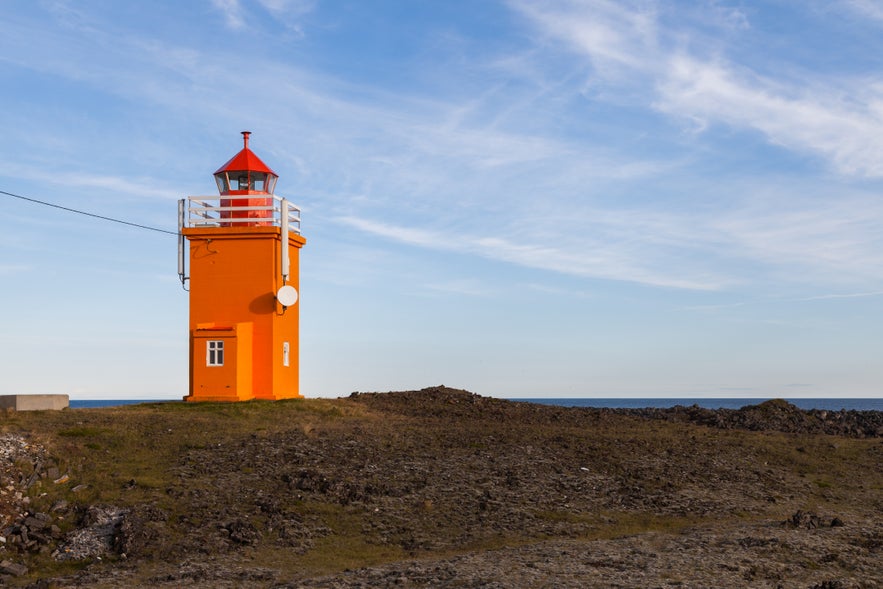
Photo de Wikimedia, Creative Commons, par Diego Delso. Aucune modification apportée.
La pêche a toujours été le pilier de Grindavik, la majorité des habitants travaillant dans ce secteur. Elle a été essentielle à la survie des Islandais, car le climat rude rendait l’agriculture difficile.
Le Musée du poisson salé, situé dans la maison de la culture Kvikan, met en valeur l’héritage de la pêche et l’art traditionnel de la conservation du poisson. Juste à l’extérieur de la ville, le phare de Hopsnesviti se dresse sur une pointe de lave, offrant une vue sur les épaves et la mer environnante.
En dehors de la pêche, le sport est très populaire à Grindavik. La ville possède un centre sportif et l’équipe masculine de football de Grindavik, et la légende islandaise du football Alfreð Finnbogason y est née.
La ville possède aussi une riche histoire littéraire. Le romancier et traducteur primé Guðbergur Bergsson y est né, tandis que l’écrivain espagnol Jaime Salinas Bonmatí y a passé ses dernières années.
Foire aux questions sur Grindavik
Il y a encore beaucoup à découvrir sur cette ville unique. Voici les questions les plus fréquentes à son sujet :
Quel temps fait-il à Grindavik ?
Grindavik bénéficie d’un climat subarctique avec des étés doux et des hivers froids. La température moyenne en été est d’environ 10-15°C, et en hiver elle tourne autour de 0°C. En raison de sa situation côtière, il peut y avoir du vent et de la pluie, alors prévoyez des vêtements adaptés et superposez les couches.
Puis-je visiter Grindavik toute l’année ?
Oui, mais la ville connaît des fermetures régulières à cause des éruptions en cours. Il est donc important de vérifier les conditions avant de partir.
L’hiver apporte aussi des conditions difficiles, avec tempêtes de neige et routes verglacées. Préparez-vous à des températures froides et à une météo changeante. L’été est plus doux et offre plus d’heures de clarté pour les activités en plein air.
Grindavik est-elle un bon endroit pour voir les aurores boréales ?
La péninsule de Reykjanes offre de bonnes chances d’observer les aurores boréales, surtout en hiver, lorsque les nuits sont longues. De nombreux endroits éloignés de la pollution lumineuse permettent d’admirer l’aurore boréale. Consultez les prévisions pour maximiser vos chances.
Y a-t-il des sentiers de randonnée près de Grindavik ?
Grindavik est entourée de paysages naturels magnifiques, offrant de nombreuses possibilités de randonnée. L’un des sentiers les plus populaires est celui autour du volcan Fagradalsfjall. La péninsule de Reykjanes propose aussi d’autres itinéraires menant à des sources chaudes, des cratères et des falaises côtières.
Un joyau naturel sur la péninsule de Reykjanes
 Grindavik se distingue par ses paysages spectaculaires. Accueillant l’attraction la plus célèbre d’Islande, le Blue Lagoon, la ville offre aussi de superbes randonnées, l’observation des aurores boréales et une gastronomie de haut niveau.
Grindavik se distingue par ses paysages spectaculaires. Accueillant l’attraction la plus célèbre d’Islande, le Blue Lagoon, la ville offre aussi de superbes randonnées, l’observation des aurores boréales et une gastronomie de haut niveau.
Prêt à poursuivre votre aventure islandaise ? Découvrez nos guides complets pour organiser vos activités près de Grindavik : Le guide ultime du Blue Lagoon et Les meilleures activités sur la péninsule de Reykjanes.
